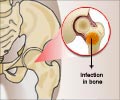
‘Novel software named 'mlstverse' can be used to identify NTM from clinical specimens more accurately, allowing the implementation of targeted therapies and improving the cure rates of various infections.’
Read More..Tweet it Now
Referred to collectively as NTM, these species are widely found in soil and water. However, if given the chance, NTM can cause serious skin and lung infections in susceptible patients. One of the biggest impediments to the treatment of NTM infections is the difficulty in telling the bacteria apart, particularly at the subspecies level. Accurate identification is crucial though, as different species show varying levels of responsiveness to different antibiotic therapies. Read More..
"Among the current NTM identification methods, the most sensitive and accurate are based on genomic information," says author Shota Nakamura. "However, despite the recognized need for high quality genomic data that allows NTM identification to the subspecies level, current databases only contain assemblies for 148 species. Therefore, in this study, we sequenced the genomes of a further 27 species and resequenced the genomes of 36 species."
Using their newly acquired sequences in conjunction with 7,484 previously published genome assemblies, the researchers developed a comprehensive database of 175 NTM species identified based on the sequences of 184 separate genes. Known as multilocus sequence typing, each species can be differentiated by its specific combination of sequence differences within the 184 genes. The database also included other Mycobacterium species for comparison.
"Once we had assembled our database, we developed software, called mlstverse, that compares unknown sequences against the database, resulting in accurate identification of NTM," explains lead author of the study Yuki Matsumoto. "When we compared our method with other approaches for the identification of 29 clinical NTM isolates, mlstverse was the only method that identified all 29 isolates to the subspecies level."
The possible applications are promising--Takeshi Kinjo, a medical doctor in the University of Ryukyus Hospital, says that "this method can potentially be used to identify NTM from clinical specimens, allowing the implementation of targeted therapies and improving the cure rates of NTM-associated infections."
Advertisement







